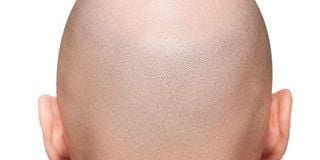Tracing the male pattern baldness

Male pattern baldness is a hair loss condition that can be treated using Rogaine or Propecia.
What you need to know:
- Male pattern baldness occurs when there is too much of a specific type of hormone called dihydrotestosterone (DHT) in your body.
- While it's most common for hair loss to occur around the age of 30, some men may start losing their hair as early as their teens or twenties.
Hair loss can be a blow to your confidence. Unfortunately, male pattern baldness is a form of hair loss that most men experience at some point in their lives.
Male pattern baldness affects millions of men. It usually begins in the late twenties or early 30s and can progress for many years before stabilising. In rare cases, it starts earlier.
Causes
Male pattern baldness is caused by a combination of factors, including genetics and your health. Sometimes male pattern baldness runs in families. For example, if your father experienced balding, you may be vulnerable to the same condition. Male pattern baldness can also be related to health problems like thyroid disease or cancer.
Symptoms and signs of male pattern baldness
- Receding hairline at the front or thinning crown area. The receding hairline is what many men recognise as the classic sign of male pattern balding. If your forehead appears to be getting larger, or your crown is becoming more exposed to the sun, it could signify hair loss.
- Thinning of hair over the entire scalp. If you have begun seeing significant thinning across your scalp instead of just in patches, this can indicate male pattern baldness. This balding usually starts around the temples and the crown of the head.
- Excessive hair loss. Receding hairline does not happen overnight. If you notice more strands of hair on your pillowcase or in your shower drain, this could be a sign that male pattern baldness is setting in.
See your doctor if you experience any of the following symptoms:
- Bald patches or areas that are entirely smooth. You may see these bald spots on your crown, temples, forehead, and/or around the back of your head.
- Thinning hair all over the scalp with noticeable shiny skin showing through remaining thin strands. If your scalp is becoming more visible, this could be another sign of male pattern baldness.
- Increased scalp volume (the skull appears more extensive than usual). This can happen if the hair loss creates a visible gap between your forehead and hair area.
Treatment options for male pattern baldness
- Hair transplant surgery. This treatment option works by relocating hair follicles from one part of your scalp to another and can be used for men experiencing male pattern baldness.
- Minoxidil and finasteride. Works best for those experiencing hair loss on their temples and crown but can also be used along the hairline if it's receding over time. In addition, Finasteride is an oral medication that the FDA also approved for treating male pattern baldness. It is prescribed to men experiencing hair loss on their crown and works best when paired with minoxidil.
- Hair transplant from a donor. This is one of the most effective, permanent treatments for male pattern baldness. In a hair transplant procedure, individual healthy follicles from the donor are transplanted to your thinning or balding area. This procedure is known as Follicular Unit Transplantation.
- Hair fibres are temporary and can be used as a solution for those experiencing male pattern baldness who do not want to undergo surgery or use medication. These tiny fibres adhere to your scalp without damaging existing hair follicles, giving you the appearance of fuller coverage even when your thinning areas are visible.
Male pattern baldness FAQs
What causes male pattern baldness?
Male pattern baldness occurs when there is too much of a specific type of hormone called dihydrotestosterone (DHT) in your body. These hormones cause your hair follicles to shrink and eventually stop growing new hairs.
Can male pattern baldness be stopped?
At this time, there is no known cure for male pattern baldness. However, many treatment options are available to help you manage your hair loss and regain a full head of hair if desired.
How much does treatment cost?
It depends on the type of treatment. Hair transplant surgery can be expensive. It's best to consult your doctor before making any decisions on treatments or procedures.
Can the male baldness pattern start at 16?
Male pattern baldness can begin at any age. While it's most common for hair loss to occur around the age of 30, some men may start losing their hair as early as their teens or twenties.
Does hair transplant treat baldness permanently?
Hair surgery is a permanent solution. The hair transplanted grows on the scalp as if it was native to that area. In other words, the transplanted hair follicles are permanent and will not fall out as time goes on.




